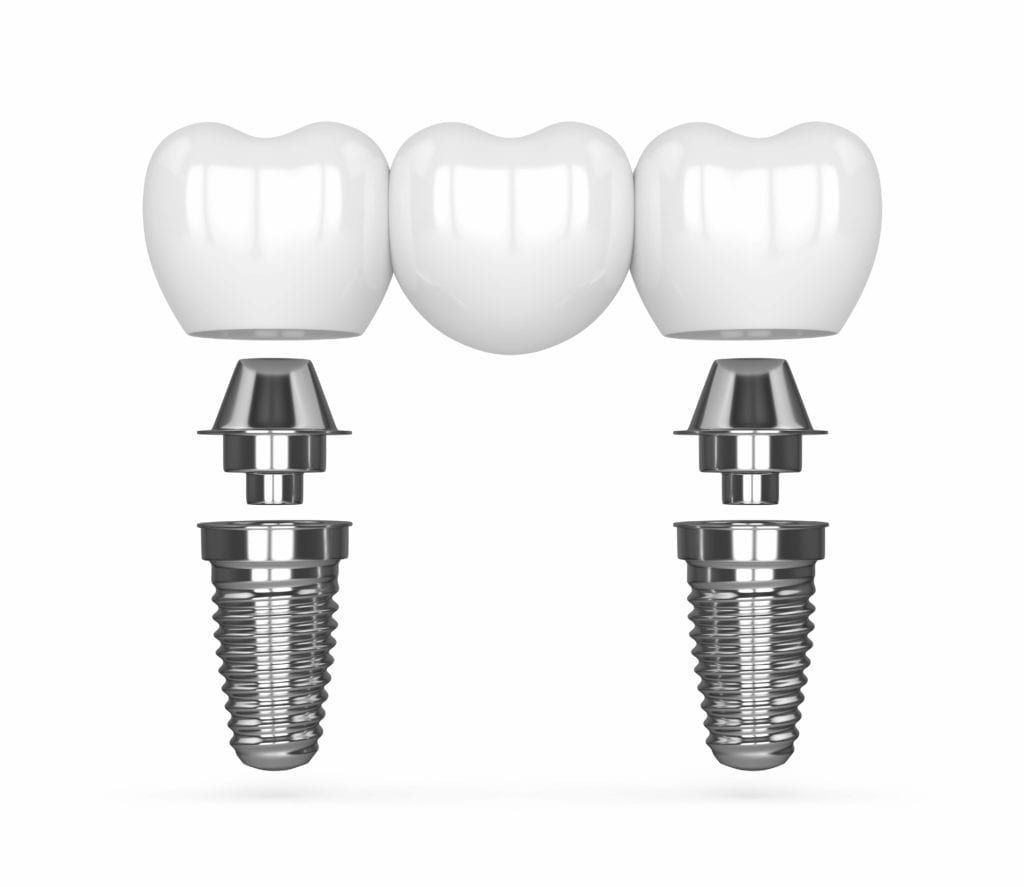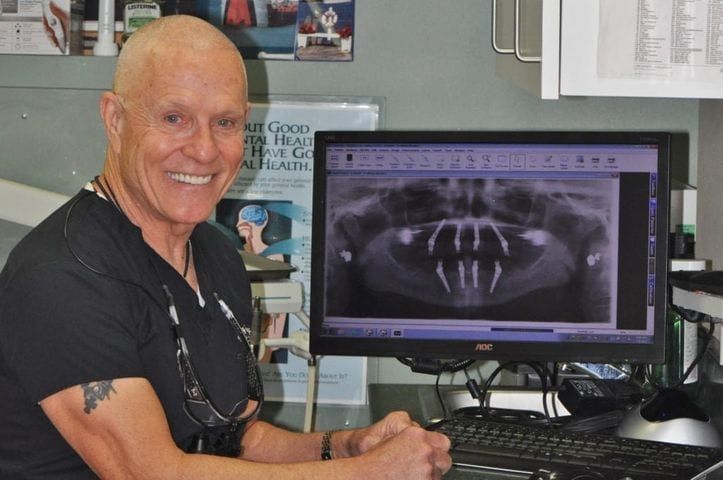The world of implant dentistry can be overwhelming. Getting any kind of medical or dental procedure would make anyone feel nervous, especially if they are not sure what to expect. Many implant dentists will go out of their way to explain treatment details with patients, however they may use certain terminology that is not familiar to patients. In order to introduce you into the world of implant dentistry and make it easier to converse with your implant dentist, here are ten important implant terms to know:
Abutment
This term is used to describe the connector piece that lies between the implant screw and the dental prosthesis. After placing the implant screw, the abutment is a metal post that is visible above the gum line. In most cases, the dental prosthesis will be cemented onto the abutment piece.
Bone Graft
Bone grafts are surgical procedures that are performed when a patient is lacking bone mass. During a bone graft, bone material is placed at the treatment site. This bone material will eventually grow into new bone, which increases the bone mass and helps to stabilize a dental implant. Bone grafts can be performed before or during a dental implant placement procedure.

Bridge
A dental bridge is a dental prosthesis that can restore multiple adjacent missing teeth. When used in coordination with dental implants, an implant-supported bridge consists of two implant-supported dental crowns on either side of a single or multiple fake teeth.
Crown
A dental crown is a cap that fits over the abutment and resembles a natural tooth. Implant-supported crowns can be used to restore a single missing tooth or they can be used as an implant-supported bridge to restore multiple missing teeth.
Dentures
Implant-supported dentures are used to replace an entire arch of missing teeth. They can be used to replace the upper or lower arches, as well as both arches in the case of a full mouth rehabilitation.
Endosteal Implant
Endosteal implants refer to dental implants that are made up of an implant screw, abutment, and dental prosthesis. This type of dental implant is the most commonly used and is placed in the jawbone for stability.
Immediate Load
Immediate load implants refers to a dental implant procedure that places dental implants and dental prosthesis in the same appointment. For this reason, they are also sometimes called teeth in a day or same day implants.
Osseointegration
The process by which the surrounding bone fuses with the implant screw, securing it in place. Osseointegration is a gradual process that generally takes about 3-6 months to complete. During this period, your implant dentist may recommend a special diet to prevent additional stress on the implant. For dental implant success, osseointegration must occur.

Subperiosteal Implant
This type of dental implant uses a metal framework instead of an implant screw to hold it in place. This metal framework sits on the top of the jawbone and below the gums. Although it can be a good choice for some with inadequate bone mass, subperiosteal implants lack the same strength as endosteal implants.
Titanium
The material used to fabricate implant screws and abutment pieces. Titanium is an ideal metal for dental implants because it is lightweight, does not corrode, and is biocompatible.

Dr. Gregory J. Young is a Diplomate and board certified by the American Board of Oral Implantology/Implant Dentistry. He is also an Associate Fellow of the American Academy of Implant Dentistry. Additionally, he provides education, training and mentoring to his colleagues in all phases of implant dentistry. He has over 37 years of experience and dedicates his practice solely to implant dentistry and training.




